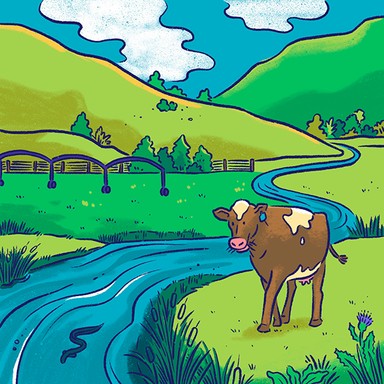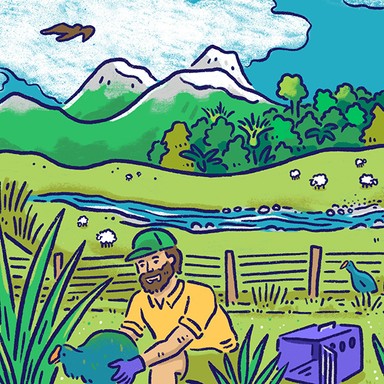
Taranaki Regional Council

Freshwater
The worsening state of New Zealand’s lakes and rivers is a major challenge for regional councils, which play a leading role in managing freshwater in their areas. To this end, regional councils create plans to protect water resources from contaminants and overuse.

Freshwater
The worsening state of New Zealand’s lakes and rivers is a major challenge for regional councils, which play a leading role in managing freshwater in their areas. To this end, regional councils create plans to protect water resources from contaminants and overuse.
Review and update riparian planting programme to ensure ongoing maintenance of riparian strips paired with relevant water monitoring.
Complete the Taranaki Regional Council's objective of 100% agricultural effluent discharge to land to eliminate direct discharge to streams and rivers.
Aim to increase water quality at all monitored freshwater sites by 2025.
Ensure all rivers are swimmable – dates for this to happen will be relevant on their current levels of pollution.
Ensure all rivers are free flowing – this will enable fish/tuna/wild life to move unimpeded. Also help limit flooding.
Establish and monitor what volumes of water can be taken from our rivers for irrigation/business use without a detrimental impact.
Ensure the Natural Resources Plan is focused on good quality regulation, ie evidence-based, time to implement and practical levers.
Complete modelling to implement a more sophisticated system to signal higher risk of E.coli in rivers after high rainfall events.
Ensure water takes are sustainable, and ecosystem health and groundwater quality and quantity are protected.
Review and update riparian planting programme to ensure ongoing maintenance of riparian strips paired with relevant water monitoring.
Complete the Taranaki Regional Council's objective of 100% agricultural effluent discharge to land to eliminate direct discharge to streams and rivers.
Aim to increase water quality at all monitored freshwater sites by 2025.
Ensure all rivers are swimmable – dates for this to happen will be relevant on their current levels of pollution.
Ensure all rivers are free flowing – this will enable fish/tuna/wild life to move unimpeded. Also help limit flooding.
Establish and monitor what volumes of water can be taken from our rivers for irrigation/business use without a detrimental impact.
Ensure the Natural Resources Plan is focused on good quality regulation, ie evidence-based, time to implement and practical levers.
Complete modelling to implement a more sophisticated system to signal higher risk of E.coli in rivers after high rainfall events.
Ensure water takes are sustainable, and ecosystem health and groundwater quality and quantity are protected.
Mayor
Compare the mayoral candidates in your area
Local council
Compare the candidates for your city or district council
Regional council
Compare the candidates for your regional council
Local board
Compare the candidates for your local or community board






